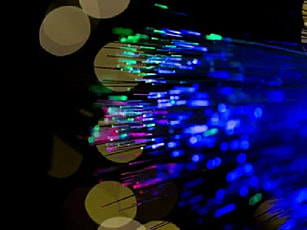- Narinder Singh Kapany, known as the “Father of Fibre Optics,” demonstrated the first successful transmission of light through glass fibres in 1953, laying the foundation for modern fibre optic technology.
- Charles Kao’s groundbreaking work in the 1960s on low-loss optical fibres revolutionized long-distance communication and earned him the Nobel Prize in Physics in 2009.
Fibre optic technology changed global communication. It gives fast and reliable internet and it helps many industries grow. Many people ask who made fibre optic cables and who were the main minds behind this work. Fibre optics sends data as light signals through glass or plastic fibres. It gives very high speed and wide capacity. The idea of sending light through fibres is very old. But it was in the 1950s and 1960s that the idea became real in the way we know it now. In the start the main problem was to make glass fibres clear enough so light could move far without losing signal. Many inventors and researchers worked on this problem and their work built the base for fibre optic cables.
Also read: FibreWorld supports fibre optic cable networks in Nigeria
Narinder Singh Kapany: The father of fibre optics
Narinder Singh Kapany was one of the most important people in fibre optic history. He was born in India in 1926. His work showed that light could move through glass fibres. In 1953 he showed light going through a soft glass fibre. This was a key moment in fibre optics. His study gave him the name “Father of Fibre Optics.” He also helped turn the idea into real use. His work was not only about theory. He also looked at real uses like medical tools such as endoscopy. His work made the base for fibre optic cables that are now used in telecom, internet, and many other areas. Charles Kao, a Chinese-American physicist, is called the “Godfather of Fibre Optics.” His work in the 1960s was about making fibres with low loss. This was a big step that made fibre optics more useful. He showed that fibres could send signals far without big loss. He helped make the first fibres that could do this. In 2009 he won the Nobel Prize in Physics for his work.
Also read: Discovering the power of fibre optic networks

Other pioneers in fibre optics
Kapany and Charles Kao were the most known names in fibre optics but others also made big steps. In the 1950s Willis Lamb studied light emission and his work helped later fibre optic progress. In the 1970s Robert Maurer, Peter Schultz, and Donald Keck worked at Corning Glass Works. They made the first real fibre that could send signals far with very low loss. Their work and the work of many others shaped the fibre optic field as we see it today.

